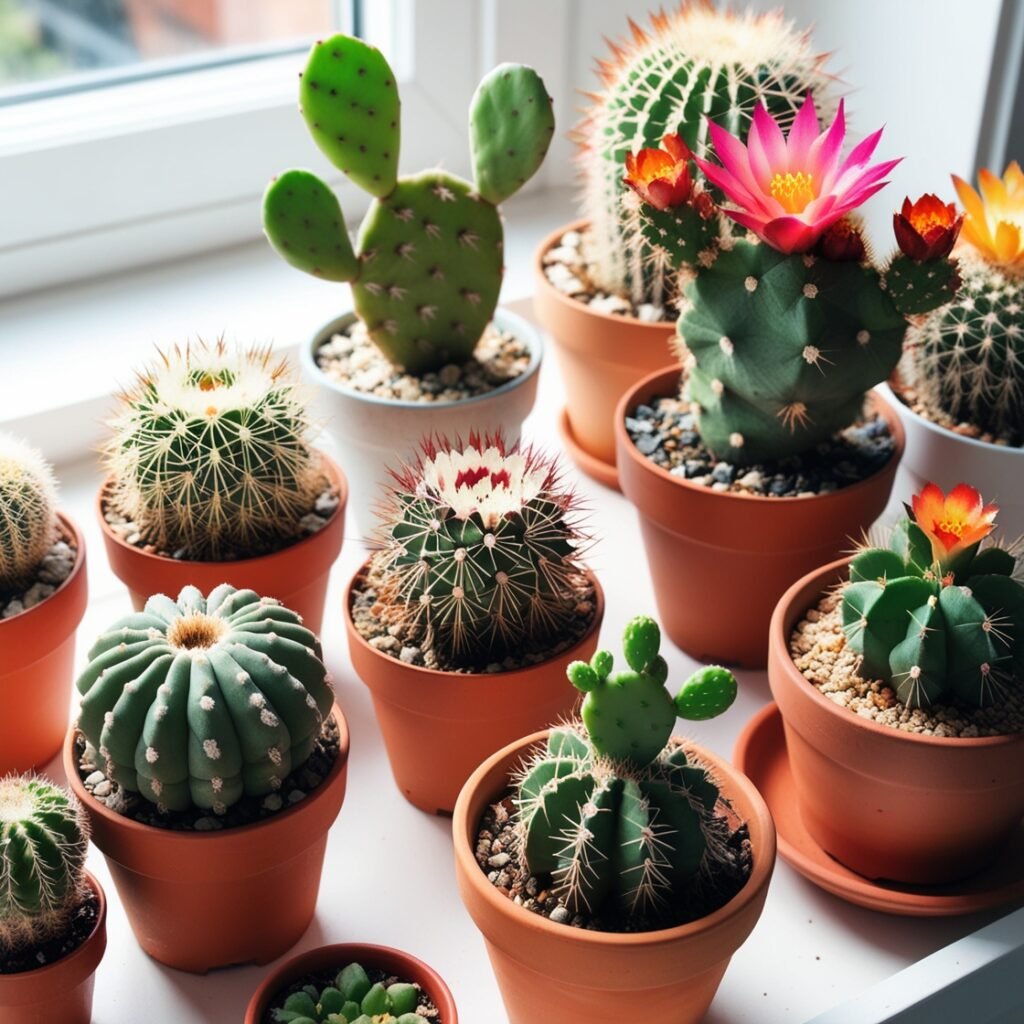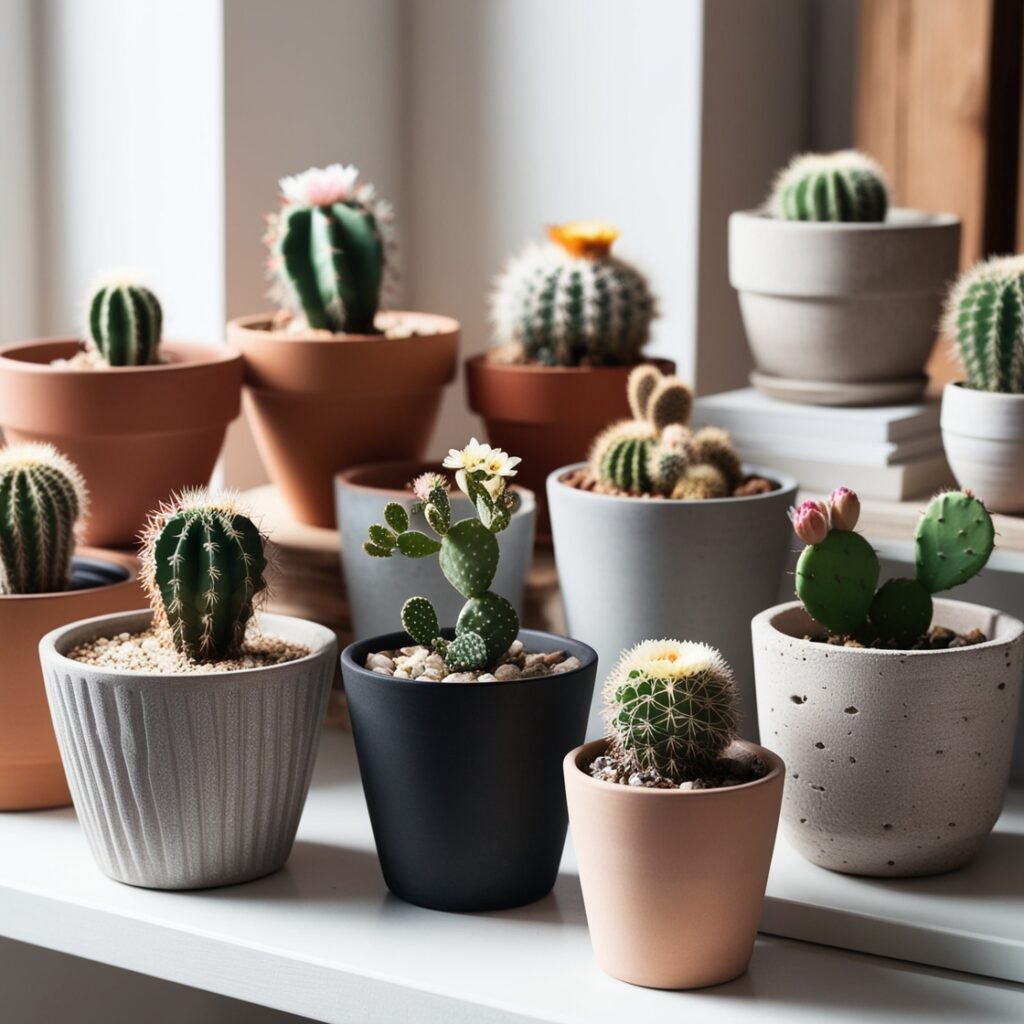
Really, cacti are already seen as interesting plants due to their hardiness and individualized appearance. The baby cactus is carrying some of its most charming features. This makes baby cacti perfect for indoor or outdoor gardens, whether you’re a seasoned gardener or new to the practice.
Today, I am giving a complete guideline which will discuss everything about baby cactuses, from suitable species and growing environments to care and propagation. After reading this post, you will be able to take care of them very easily. Let’s started!
What is a Baby Cactus?
A baby cactus is just a small form of the grown-up version. Baby cacti, are typically seedlings or possibly naturally little species. In comparison, adult cacti can grow to be several feet tall while baby versions are miniaturized and perfect for tiny living spaces such as an apartment, office desk or windowsill.
Young cacti are colorful and stylistically diverse, from prickly spheres to soft wooly forms. Sold often in small portion and grown both singularly as a part of larger cactus garden.
Key Features of Baby Cacti
Pocket sized: Young cacti are smaller baby plants ranging from 1-4 inches tall and may grow a bit taller as they mature in time. Let’s know the primary features-
- Wide Variety
Hundreds of species of baby cacti all come in different colours, shapes and texture to match every decor.
- Easy Care
Because of how resilient these types of plants are beginner growers or anyone with a busy schedule can enjoy them.
Baby cacti may live happily ever after outside too depending on species. It is adaptable to an indoor or outdoor life. Nice for those who do not have a yard!
Types of Baby Cacti

However, there are many different baby cacti with unique characteristics in their look and growing process. Here, we list some of the most common kinds that are highly-suited for cactus beginners or who just wants to integrate within their foliage a little bit variety.
1. Mammillaria
Mammillaria cactus plants are looking very beautiful. These cool little darlings are some of the most popular species when you think about baby cacti. They are globe-shaped, round plants with tiny clusters of thorns. The flowers are generally in hues of pink, red or yellow and they emerge from the top part on many species within this genus.
Size: Generally tiny, about 2-4 inches in diameter
Light: Requires high, indirect light.
Water: Keep barely moist and allow to dry out thouroughly between waterings.
2. Echinopsis
Echinopsis cacti are famous for its round, ball-shaped body with colourful flowers. These are slow growing and great for small pots. They can grow large colorful flowers and are a vivid addition to your home.
Length: Small-medium between 2-3 inches.
Light: Full sun needs 6-8 hours direct sunlight
Watering: water less in winter, moderately essential during growing season
3. Astrophytum
These are famous for the star-like appearance, which is why they’re colloquially referred to as “star cacti,” and their geometric patterns. Also, they are low maintenance and the “ribs” that run through them make their appearance stand out.
Height: Rarely over 4 inches
Light: Does best in bright, indirect light.
Water: Allow the soil to dry out fully before watering
4. Opuntia
Read Also: 19 Types Of Prickly Pear Cactus while some species of Opuntia can grow really large there are few smaller varieties and ideal opus for baby cacti. It is more recognizable by their flat, paddle-shaped segments, which fruits and are capable to produce colorful flowers.
Light: Full sunlight to partial shade.
Watering: low, and allow soil to dry out between watering.
5. Rebutia
Rebutias have small globular bodies and lovely flowers that grow in showy clusters. They are low-maintenance and their versatility in respect to space makes them perfect for little places.
Size: Grows to around 2 inches in diameter.
Sunlight: Medium to bright, indirect sunlight
Water: When the top 1 inch of soil is dry
Caring process for Baby Cacti
Most cacti come from the desert, so grow your baby cactus in conditions that mimic a desert for it to be healthy. Key growth conditions to consider:
1. Light Requirements
While many baby cacti do well in very bright, direct sunlight and should be put on a sunny windowsill that faces south. If you are growing it indoors, make sure that they get a minimum of four to six hours of sunlight every day.
For plants that thrive in low light scenarios such as Mammillaria, it is best to place them near a window facing east or north so their photosynthesis needs are well attended without the direct sunshine.
If your house lacks in natural light then think about purchasing grow lights for the corner you keep them at. Because of their need for sunlight, cacti can benefit from grow lights which help them simulate the light they require to thrive during those dark winter months.
2. Temperature
A cactus needs a combination of warmth like the baby version and cooler, swept temperatures to slow down its growth. The ideal temperature is 60°F to 80°F. So long as they are not exposed to direct, seeing sunlight for extended periods of time, Golf Greens can tolerate higher temperatures.
In the winter, they should never be exposed to cold drafts or temperatures that fall below 50°F as this can shock and kill off a plant
Although they are used to constantly varying temperatures, some cacti can suffer when it is cold. Make sure your cactus is indoors or in a warm area during the cold months.
3. Soil and Potting
A good quality soil mix is very important to keep the baby cactus healthy. To avoid root rotting, Cacti require great drainage thorough the soil. I just use a cactus-mix, and I have used the commercial Epi-cactus mix made by Schultz or you can make up your own with 50/50 regular peat-based potting soil w/coarse sand or perlite- better for drainage.
Baby cacti don’t like water on their toosh, and good drainage helps keep the roots happy. Terracotta offers a good option as it allows moisture to evaporate resulting in better drainage.
4. Watering
People also love cacti, because of their low water requirements. Baby cacti are no exception. They have adapted to living in arid environments, so they do not need regular watering. Allow the soil to dry out entirely between waterings that bugs will spawn in it if there’s too much moisture and their offspring may consume your roots.
5. Humidity
Cacti tend to prefer low humidity because they are desert plants. Since they like dryness, it would be wise not to mist your baby cactus or put them into a humid place. For those living in an already humid environment, ensure there is enough ventilation near the cactus to avoid excess moisture.
Caring for Baby Cacti
Caring process of these beautiful baby cacti is essential for its well growth. Let’s discuss the special caring process of this cactus-
1. Fertilizing
Baby cacti do not require much in the way extra nutrients, however they would benefit from more occasional feedings during growing season. Fertilize with a cactus fertilizer, or dilute well-balanced liquid plant food. Use the fertilizer every month in spring and summer to cultivate well-being expansion. Keep in mind that the cactus goes to sleep during winter, so avoid fertilizing then.
2. Repotting
Typically, you do not have to repot your baby cacti because they tend to grow slowly. But, if your cactus outgrows its pot or you see that the roots are too crowded it is time to repot. The optimal time for repotting is the spring. Use a pot that is only slightly larger than the its current one to prevent drowning and top up the soil with fresh, free-draining cactus mix.
3. Pests and Diseases
While cacti are usually resistant to pests, they may become infested with pests such as mealybugs, spider mites or scale insects. Always examine your baby cactus plant properly. If you see little bugs or sticky residue, spray the plant with insecticidal soap or neem oil.
Overwatering also puts your plant at risk for root rot, which is when roots start to decay. So, keep conscious about it.
Propagation method of Baby Cacti
One of the great things about having baby cactus, is you can make more babies. In general, most cacti are easy to propagate via pups or cuttings. Let’s know in details!
1. Using Pups
As they mature and grow, you can also take the baby cactus off of its mother plant by giving a quick but steady tug. Remove the pup from soil it and let sit for a few days to allow your cut to dry and callous off. Plant the pup in fast-draining mix, water lightly and give it time to root.
2. Using Stem Cuttings
Take a nonflowering cane from the parent bush. Allow the cutting to set for a few days until the cut end dries out and forms a callous. Set the cutting in cactus soil and water sparingly. In a few weeks the cutting will have rooted.
Conclusion
Baby cacti are great for everyone for its unique beauty. These are great for indoor spaces, small apartments or you can even grow your cactus in a large garden. Well in the right light, soil and watering schedule you can enjoy these little desert bloomers too for years to come.
Whether you’re starting new plant babies or not planning to put too much time into maintaining a greater amount of house plants, baby cacti are easy fun and will bring something different from the desert in your home. Baby cacti are here with their hardy nature and allure to grab your love for plants.

